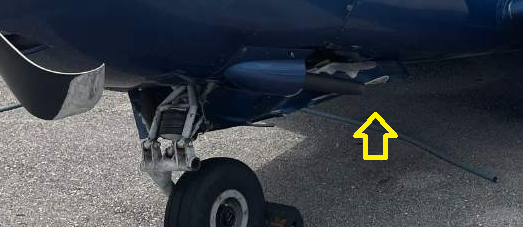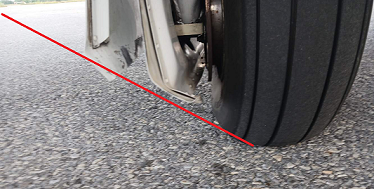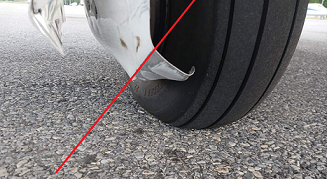
1980Mooney
Basic Member-
Posts
3,290 -
Joined
-
Last visited
-
Days Won
4
Content Type
Profiles
Forums
Blogs
Gallery
Downloads
Media Demo
Events
Everything posted by 1980Mooney
-
You have bad info. They are not permanently closed. T-29 Flying H Ranch Airport - TURF -NOTAM says you have to get prior permission to land. It is privately owned. AirNav: T29 - Flying H Ranch Airport 35X Triple-Ace Field Airport - TURF - 1271 x 40 ft. - No NOTAM. worried about a turf runway that you will never be able to take-off from?? AirNav: 35X - Triple-Ace Field Airport 4T2 - Kenneth Copeland Airport - also privately owned - NOTAM says you have to get prior permission to land. AirNav: 4T2 - Kenneth Copeland Airport etc.
-
If you listen to the video, he talks about "his shop" which charges "a fixed amount for an unknown and highly variable amount of work". He talks about taking a bath on about 500 planes per year that cost way more to repair than the flat rate. He makes it clear that the other 4,500 planes per year are paying a fee that subsidizes the 500 maintenance hogs. He said it is just like insurance. He uses the word "concierge" once but his model is not concierge. Busch and the OP are not talking about paying a "retainer fee" and then paying "time and materials' on top of it. Busch's model is classic socialized healthcare. When I am expecting a disastrous Annual, I want to join his shop and pay the fixed fee. Then I can get everyone else to pay for most of my repairs. Brilliant. Are you suggesting that the budget propose by @Austintatious was just to pay a "retainer" for a "concierge" model, and that work would be time and materials on top of it? I think most were thinking that the $6K payment was not a retainer, but a $6K payment for a full year of maintenance.
-
If you blow up the pic of the nose gear doors, the bottom looks ground down. That is classic gear up damage. In most cases, after they lift up the plane from the runway, they try to lower the gear. I have to admit that the airport seems to have done a proper job lifting - I don't see any creases at the firewall or behind where the step used to be. Sad unicorn of converted M20L. Look at the lousy paint job - all the paint peeling off.
-
As @M20Doc said add cost for shop, tools, insurance, accounting and tax - so add another 35% for Overhead Don't forget this is only for Labor So probably expect to pay $8K per year for Labor and add parts, oil and other supplies on top. And that is to "have someone THAT MIGHT BE AVAILABLE" You are assuming that the mechanic isn't working on someone else's maintenace hog or doing an overhaul, etc. This sounds a bit like socialized medicine in the UK.
-
That doesn't sound very plausable unless you were in a near crash attitude. Look at the pics. In order for that to happen while you are landing the red lines would need to be parallel to the ground scraping the runway. You would have to be on your nose and your right wing tip would be dragging. Plus if you were landing the damagae would have been worse - the aluminum would have been really ground down. I think it more likely that you taxied near something that just clipped the gear doors.
-
We have a number of pilots remarking that the B-Kool works "fine", "lasts a long time", "drops the dew point". Yes it will work well initiially and yes it will work better in moderate heat and low relative humidity where the cooling load is less. But you have to be realistic. The B-Kool holds 20 lbs of ice. (also noted on web site) One (1) pound of ice absorbs 144 BTU's when it melts The B-Kool will provide 2,880 BTU's of cooling from melting all the ice You can probably get another 200 BTU's of cooling as the fully melted water rises from 32 degrees to 42 degrees F. So fully exhausted a B-Kool provides a whopping 3,000 BTU's cooling in total A typical small car air conditioner will provide 12,000-18,000 BTU/Hr cooling. A large car air conditioner provides 24,000-40,000 BTU/Hr cooling So the B-Kool in total will provide the equivalent of what a small car A/C can to in 10-15 minutes on high. If you are taxiing and holding for 10 minutes on a blistering Texas Gulf Coast day, the B-Kool will largely be spent. Then the water in the chest will start to warm up and instead of condensing on the coils, it will act as a humidifier. It works but just don't get your expectations too high.
-
See comments from @kortopates June 2 page 17. This plane is a M20L 3 time loser - was also damaged at Mod Works during hurricane at time of PFM conversion.
-
To keep it cheap and simple they put the heat exchanger coil inside the cooler chest. The blower is mounted in the top of the chest and they suck air into the cooler lid across the heat exchanger into the damp cooler chest. It works a bit for a while but as the ice melts you are just mainly sucking air through a damp box of 100% humidity. The humidity is dumped into the plane. In Houston it just makes it more awful. To be more effective the heat exchanger and fan should be outside the cooler filled with ice. Of course it would be more bulky and expensive.
-
That is all well and good where you are with 15-20% Relative Humidity. I remember always having a canvas water bag in our '55 Chevy to try to stay cool. In Houston, where the OP is, the Relative Humidity averages 75-80% year round. During the next few days, the high is forecast to be 100+ F but still with over 50% Relative Humidity. B-Kool is useless. It will literally feel like it is raining inside the plane.
-
That doesn't mean that they were not a factor. Would you take a prescription muscle relaxant before flying? The NTSB didn't determine why the pilot did what he did. The NTSB reported the conditions that existed. Full nose up trim selected in the cockpit and full nose up trim evidenced at the jackscrew. Prescription muscle relaxants present in his body. There was no equipment failure evident. If you dial in full nose up trim during take off in any plane and do not take any action while speed decays, you will stall. I do not think you can blame this on Mooney. If Mooney's were so dangerous and difficult to control on takeoff they would have been outlawed years ago. Yes a new Mooney pilot needs to be trained to Follow the POH and select take off trim Use the electric trim to get the nose down if it is too high Use the manual wheel trim to get the nose down if it is too high Use your arms and strength to push the yoke forward to get the nose down if it is too high Sadly and tragically, the accident pilot missed 4 chances to get the take-off right. We will never know exactly what was going through his head and body at the moment - perhaps some or all of: confusion due to lack of training and/or experience? distraction? fatigue? influence of drugs? inattention? -
-
Generally if you ask it becomes permanent. And accompanied with the response "just leave 1/2 of all the assets at the door as it hits you in ass when you leave"
-
Many times (most?) retirement just means trading one boss for another "boss".... And the new "boss" is less likely to cut you any slack. Plus no days off and on call 24/7.... And don't even think of asking for a vacation to "get away from it all for a while".or to "recharge your batteries"...
-
Perhaps the OP should change the title of the topic or someone should start a new topic since the discussion has ABSOLUTELY NOTHING TO DO WITH ENGINE CLEANING
-
Correct. He had just test flown the M600. He was also taking a prescription muscle relaxant and Zofran.
-
Only if you had nothing invested previously -and then you invested at the recent bottom. If you were invested previously you would have lost 20% to get there (to that bottom starting point - the recent low). So in reality, for those with long term retirement funds invested in the market, all that has been accomplished is getting back what we recently lost…
-
We had a 1968 Javelin SST with a vinyl roof (yes that was “American Motors”). I blew a muffler apart drag racing from stop lights one day. I made up some story that my dad bought…
-
Because it has risen 20% since its recent low. Yes - If you have nothing invested and you buy at the low in every cycle then it looks like a bull market. If your great or grandparents invested everything in 1932 when the Dow was 41 or you invested everything in 1980 or at the low in 2009 everything is up. It’s great if all your investments are in cash (or you you know when to get out of every stock at is peak like Enron, RIM-Blackberry, every oil price cycle etc ) and you know the low when to get back in. But it is impossible to time the market. “The S&P 500 is now in what Wall Street refers to as a bull market, meaning the index has risen 20% or more from its most recent low.”
-
If you live in "low tax" Texas ("no income tax) you will know that the only way Counties and Cities can raise funding is from Sales Taxes and Property Taxes. As a result we have some of the highest tax rates in the nation for both. Annual Property Taxes are over 3.0% in some cities and no exemptions on vacation homes. Airports are the worst use of land as far as the Counties and Cities are concerned. First they can enjoy big income on the sale of a city or county owned airport to a developer. Then they can enjoy continual income from property tax on the housing and commercial developments. And then continual sales tax from mixed use, hotel, and service oriented development. For the County and City, the shut down and sale of an airport is a "Win/Win". For privately owned airports that have been encroached by urban sprawl (like the DFW area as noted). it is a huge "pay day" that perfectly monetizes generational wealth transfer. In the Houston area, 4 privately owned airports have been sold in the last approx 20-30 years. The heirs of the families that developed the airports generally have no interest in running an airport or, where there are multiple heirs, one of the heirs wants their share split out and sold so there is no interest in keeping the airport intact. Andrau (700 acres) is now housing, mixed use, Old Westheimer (74 acres) is now housing, Weiser (102 acres) is now housing. Only Sugar Land (622 acres) was sold to the city.
-
Only someone who once owned a car that had a vinyl roof would even know what a Members Only jacket is let alone be able to identify it.....
-
Using AI for flight planning
1980Mooney replied to ilovecornfields's topic in Miscellaneous Aviation Talk
It seems that you are mixing the breadth of available data sources that can be accessed in the design of the model with the real time data that is processed in the model. The model is based upon sites and sources of data that existed as of Sept 2021. As more sources or improved sources become available then the model is modified/improved such as from https://home.pivotalweather.com/our-company The AI model will then source real-time data - weather, airport conditions, etc. -
I think getting Mooney specific training will be the easy part. I did the same thing as @Mufflerbearing and bought my Mooney (an M20J) before I finished my PPL. Then before I got my instrument ticket I upgraded it to 300 hp similar to a Screaming Eagle/Ovation. Of course that was in the 90's and insurance was not a big issue. However have you looked at the cost to insure a Mooney now days?...especially a Bravo? Here are some online insurance quotes for a used Beechcraft Bonanza G36. The Bravo insurance might be a little less - ask @Parker_Woodruff A used G36 will cost a student pilot over $20,000/year for insurance and still about $14,000 per year after you get your PPL. https://sunsetais.com/airplanes/beechcraft/beechcraft-bonanza-g36/
-
Perhaps I was too subtle. It is not “one crazy person “. This is longstanding 17 year policy by the (iron ass) City which owns the airport. The more you ask and protest, the more you will invite scrutiny and inspections. Have you looked for a hanger at Houston Southwest? KAXH. It is privately owned and not by the city of Arcola. I get the impression they are more flexible.
-
They consider themselves that they are “reasonable”. They provide a “Tenant Maintenance Hangar” free of charge. I started in the T-Hangars in the “old days” - pre 2006 when they had cheap small self -standing T-hangars on the North side that were literally rusting away/walls settling. Back then they could care less what you did in the leased hangar. Not so after they built the new (2006) hangars. Don’t delude yourself into thinking that you are the first owner to protest. There are 17 years of owners ahead of you…






